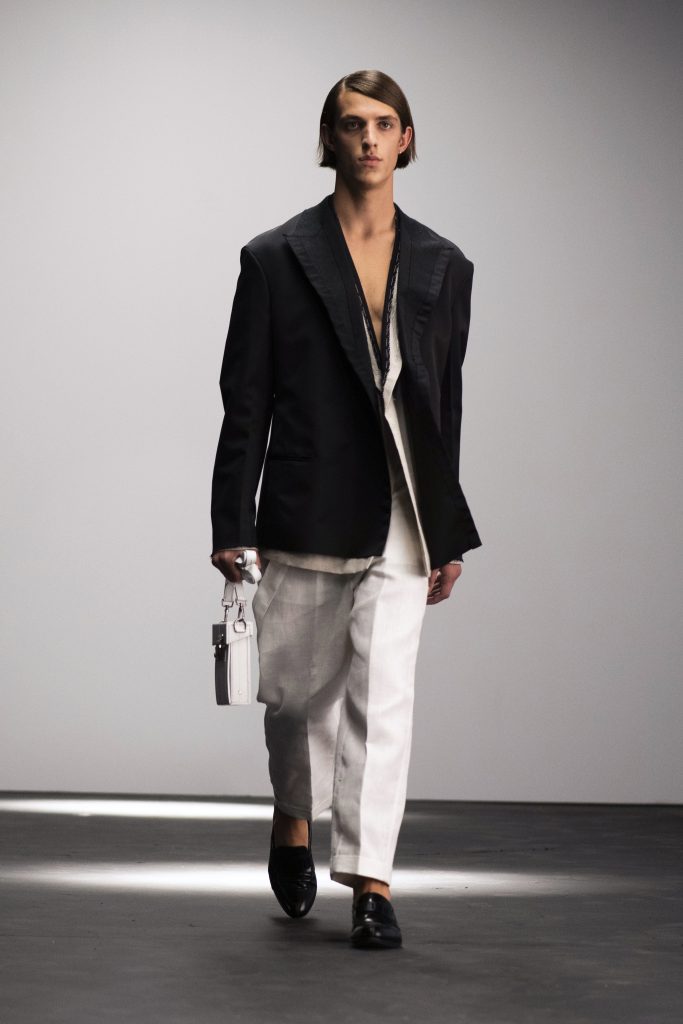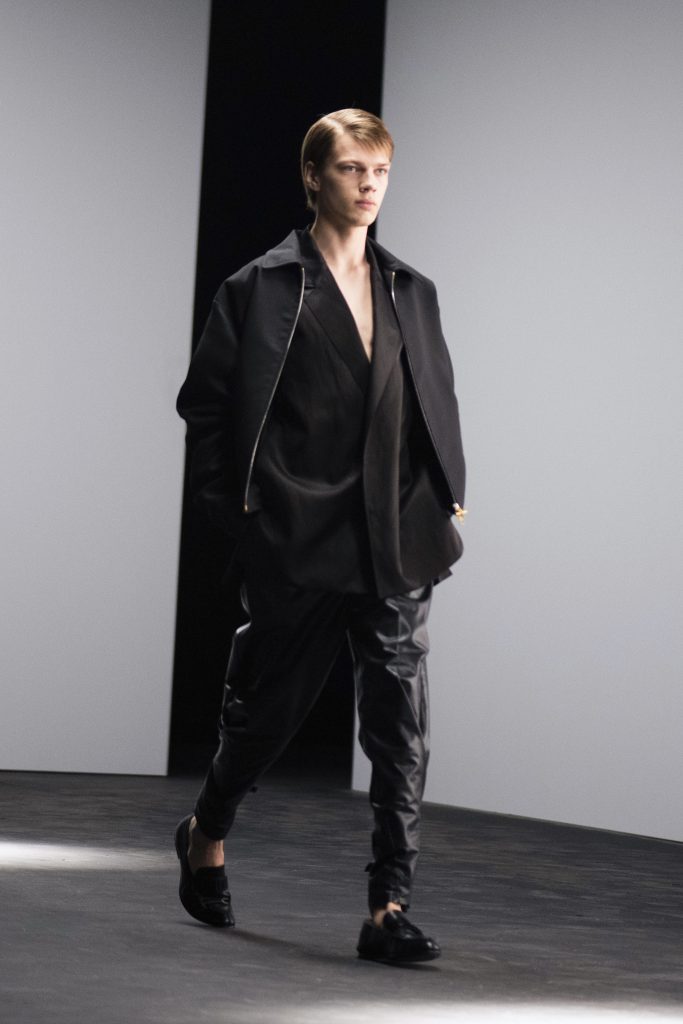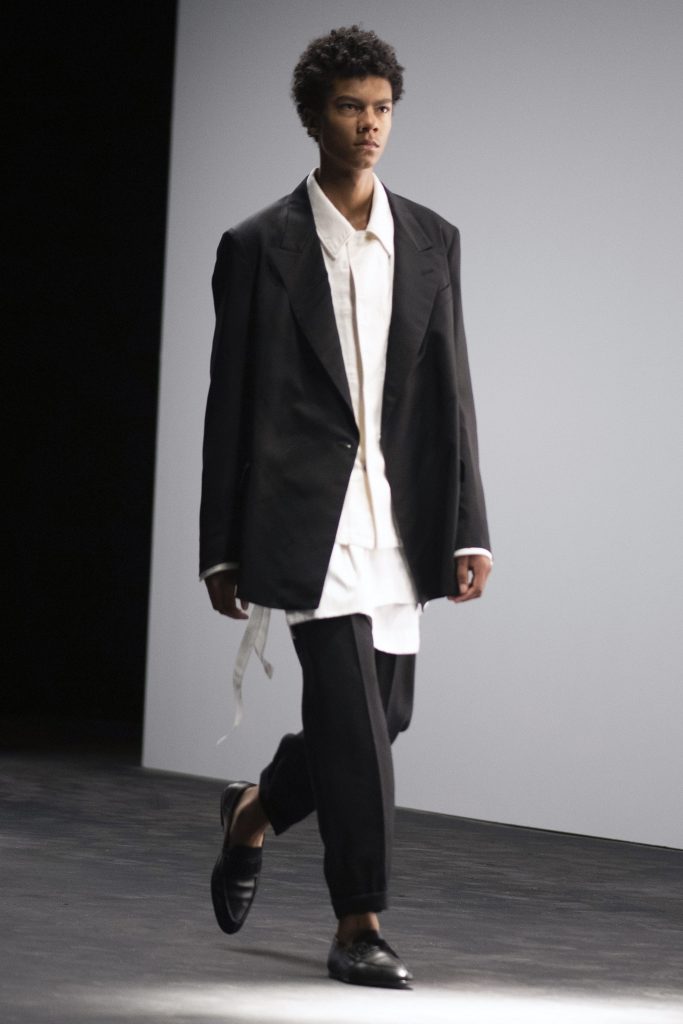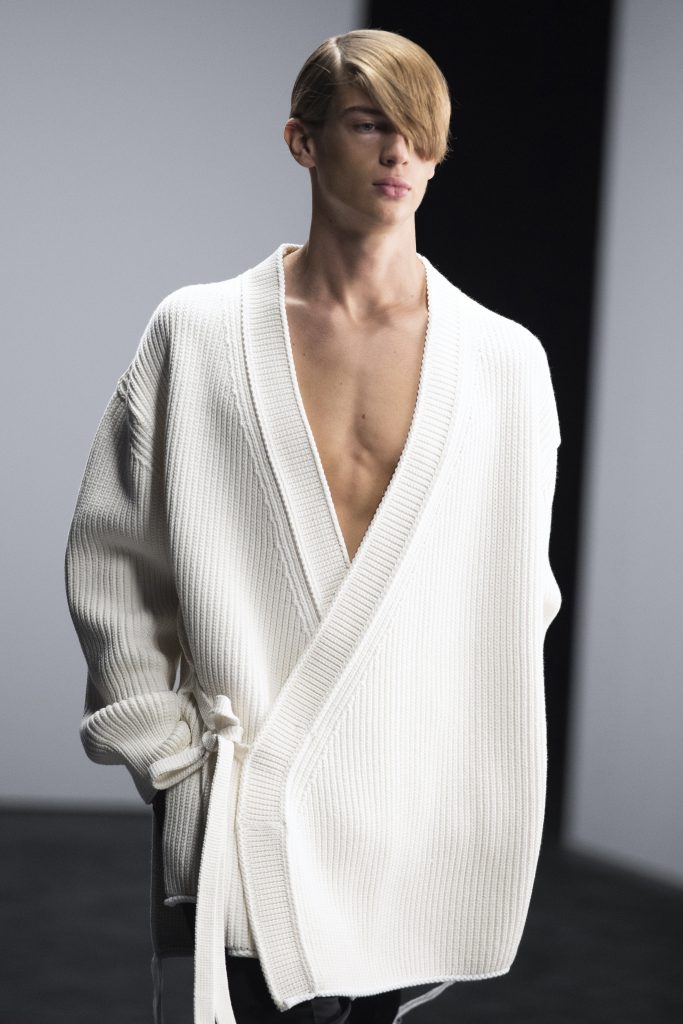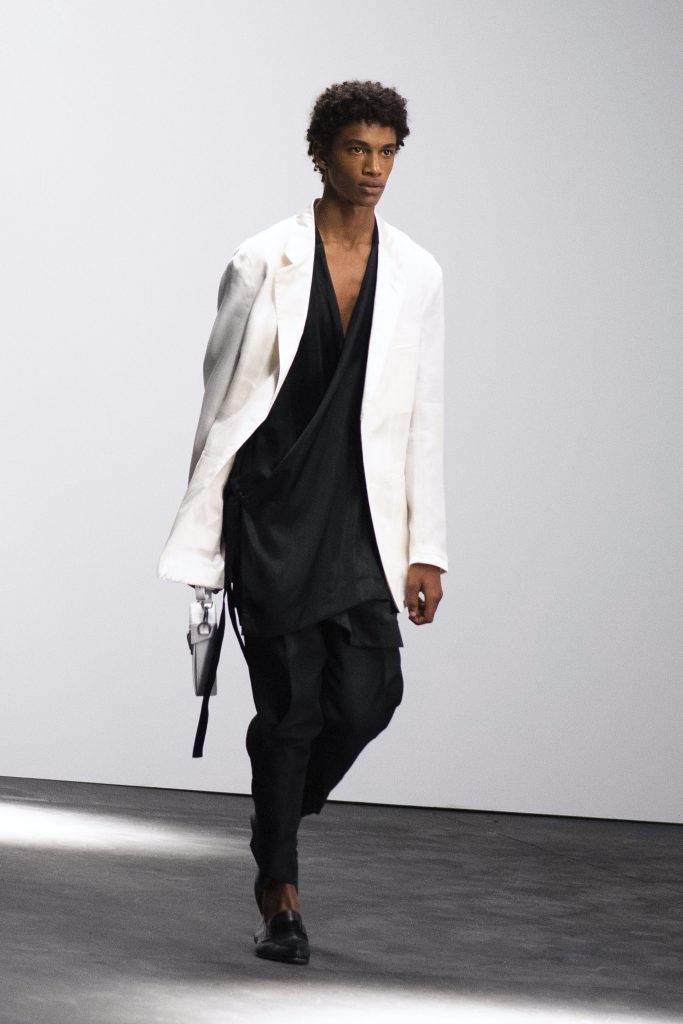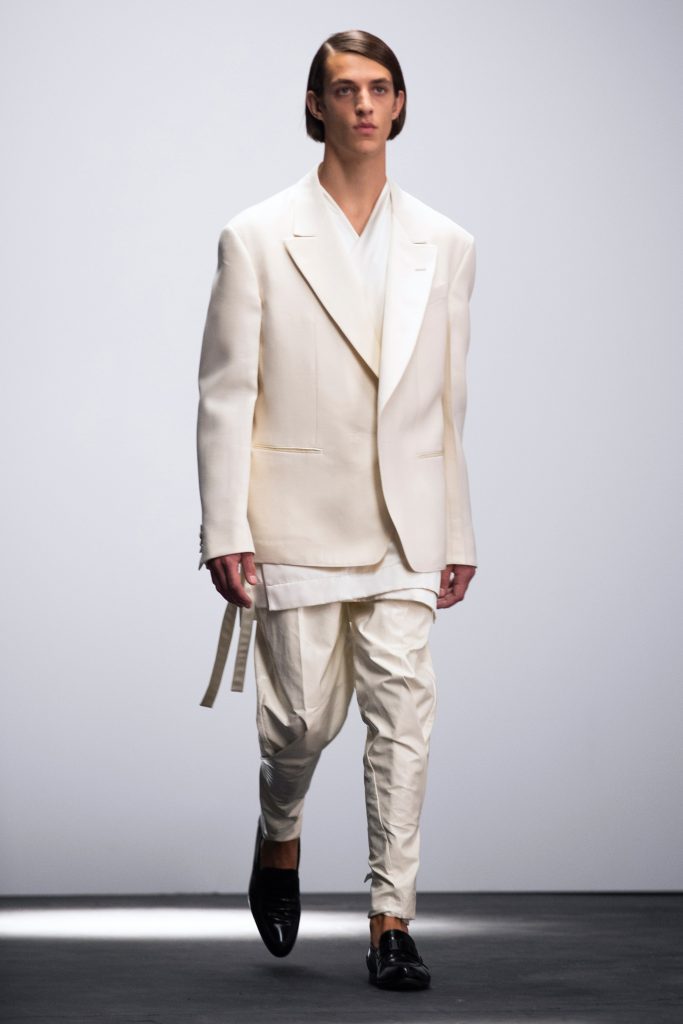DUNHILL FUSES ITALIAN AND JAPANESE TAILORING TECHNIQUES FOR SPRING

The joy of work, together with the beauty of its utility and refinement, is at the heart of the spring/summer 2021 Dunhill collection. At a time when meaning and emotional investment matters more than ever for maker and wearer, when disposable fashion has given way to timelessness, craft, and tradition are brought to the point of today by Dunhill creative director Mark Weston.
Experimenting with construction and deconstruction, the traditional codes and materials of men’s tailoring are revealed – quite literally. With a view akin to that of Richard Roger’s architecture, the secrets of traditional construction are exposed and celebrated, their utility becoming a new form of elegance, the inside shown on the outside. This recontextualizing of fabrics and formal techniques, of knowing the rules and to know how to break them, is a testament to the skills of the Dunhill tailoring workshop at Bourdon House and the foundations of Dunhill as one of the first and few true global, luxury businesses, based here in Britain.
In the collection, chest canvas and shoulder canvas, foundational fabrics that are usually reserved for internal reinforcements, become prized for their purity and naturalness and used as a focus rather than an aside. Linen Holland – a glazed linen – most often found strengthening and building pockets is featured throughout. There is a notion of the amplification of craft and the amplification of these materials in their own right, combined with more traditional luxury fabrications such as tumbled satins and super-fine bonded leathers. A stratification of history is presented through the motif of layering in the collection, a very British route from traditional pomp to something more pop. Here, fluidity and construction meet with precision to emanate raw-edged ease, finding form in an evolution of the pegged trouser, voluminous wrap jacket, and waterproof silk outerwear, all amplified from earlier Dunhill collections and finding their most elegant iteration here.
“This collection is not simply about deconstruction, but construction,” said Weston. “It’s about the joy of making clothes and the emotional investment in them. These things felt particularly resonant at this time. Fundamentally, there is a notion of utility and elegance – it’s almost a new view of ‘workwear’. There’s an evolution of ‘high Eighties’ style in the collection, culminating at today. There is a fusing of ‘New Romanticism’ with relaxed Japanese and Italian tailoring, together with our long-held and timeless traditions of British tailoring. There is an overall sense of culmination; a reflection of the many things we have invested in the collections at Dunhill – of Dunhill past, present, and future.”



